There are three broad ecological groups of earthworms, distinguished by both color and size. Knowing which ecological groups of earthworm you have can be valuable to know, even if you do not identify the species because each group tends to affect the forest differently. To download a key to ecological groups click here.
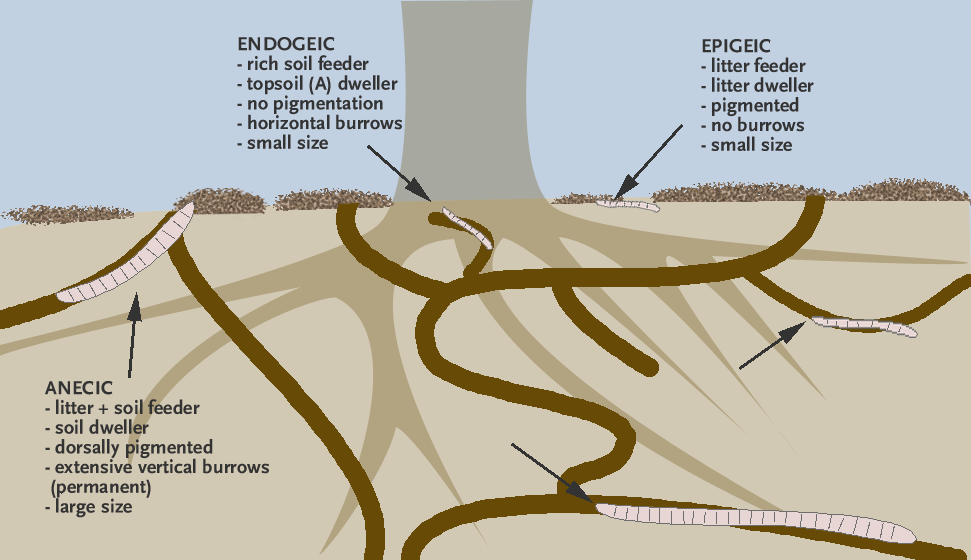
Tips for Identifying Ecological Groups
1) Use adult specimens, since juveniles (those without a clitellum) may not be full sized.
2) Use preserved specimens when determining size. The size range listed for each group is based on the length of preserved specimens and you will find that more often than not the earthworms are quite a bit longer, or more stretched out, when they are alive than when they are preserved. If you use live specimens, be sure to keep this in mind when estimating their size.
Litter and Surface Dwelling Species
Earthworms that live and feed only at the surface, and sometimes only in the litter layer are called epigeic (epi = top; geic = earth). Epigeic earthworms are small bodied (1-7cm) and reddish-brown in color. There are several species in this group that have been identified in the Great Lakes region and two are very common and widespread (see below). They are generally found in the surface litter or just beneath it, on top of the mineral soil, but rarely burrow deeply into soil. Epigeic earthworms range in size from 1 to 7 cm long as adults. They are pigmented earthworms, with a red-brown pigment in their skin which tends to be darker on the back and head so the belly is often more beige in color. Scientists think this pigmentation may provide protection from predators and from UV rays, which they are very sensitive to.
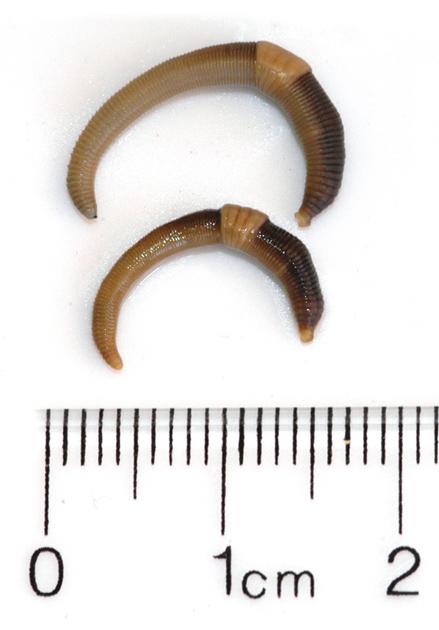
|
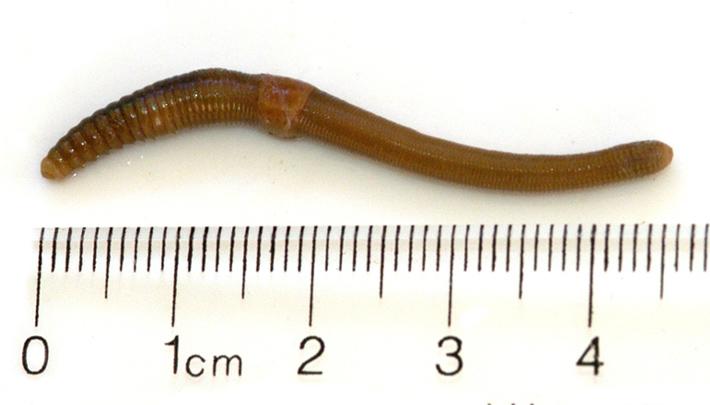
|
Soil Dwelling Species
Earthworms that live and feed in the mineral soil, rather than at the surface, are called endogeic (endo = in or internal; geic = earth). Adult endogeic earthworms can range from small to large in size (2-12cm long), depending on the species, but are identified by their lack of skin pigmentation. As a result of having no skin pigmentation, they may appear gray-blue, yellowish, pink or whitish in color. If their gut is full of dark colored soil, they may appear very dark, but don’t be fooled! They lack the red-brown skin pigmentation on the back and head that epigeic and anecic species. Endogeic earthworms live and feed in the mineral soil layers. They ingest mineral soil and digest the organic material and microorganisms found there. They rarely feed at the surface, but may be found under logs and rocks and are often seen at the surface after heavy rains when the surface moisture makes it possible for them to disperse without drying out. Endogeic species on earthworms form a network of permanent burrow systems in the mineral soil, down to about 50 cm deep, that allows them to easily move around accessing the soil resources. Several species endogeic earthworms have been identified across the Great Lakes region, three are relatively common (see below).
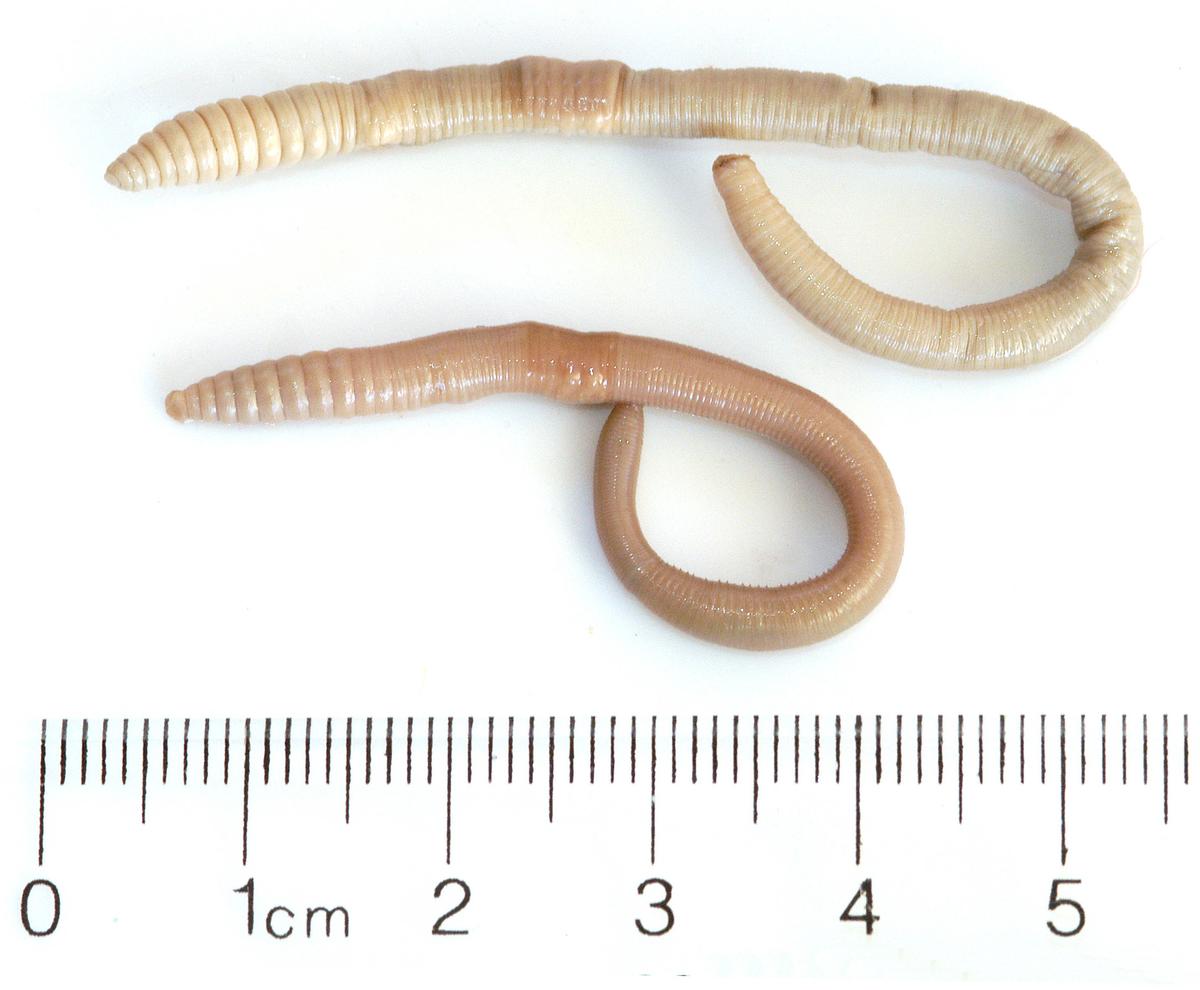
|
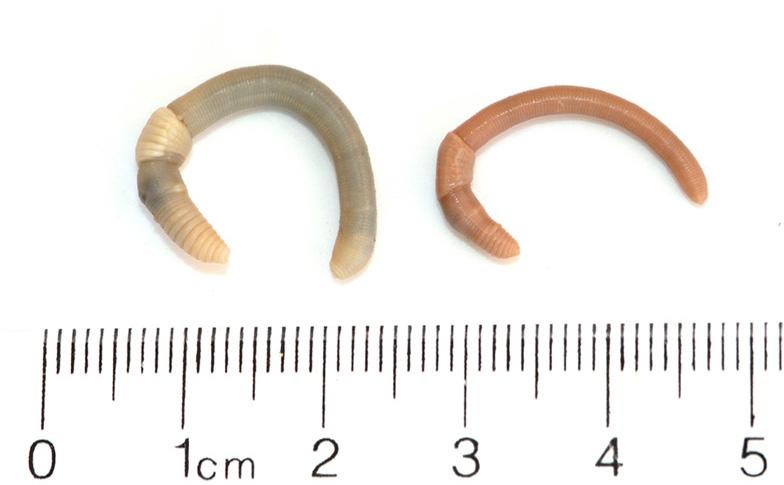
|
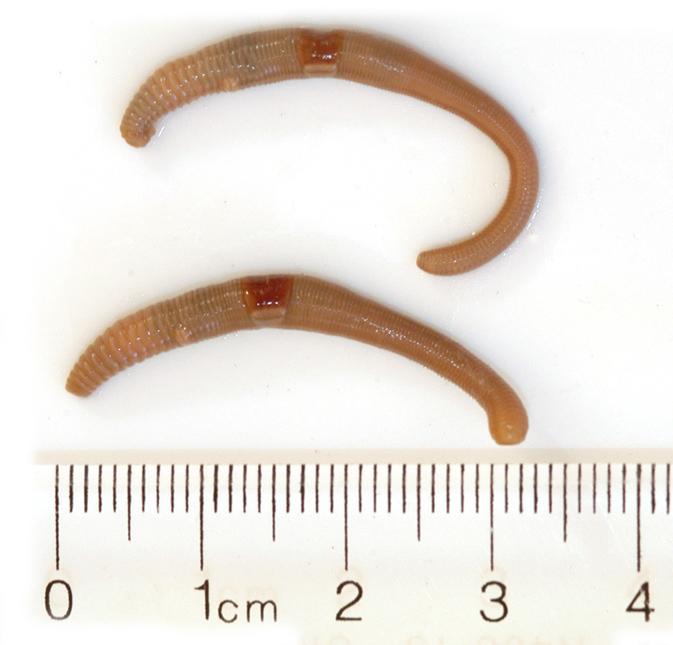
|
Deep Burrowing Species
Earthworms that burrow very deeply (down to 2 meters) but feed on fresh surface litter are called anecic (not sure where that term comes from!). Anecic earthworm species are very large (8-15cm long) and strongly pigmented with the same reddish-brown in color seen in epigeic species. Anecic species of earthworms form vertical, unbranching burrows down to 2 meters into the soil but feeds on fresh surface litter which it pulls down into its burrow. Anecic species of earthworm have the potential to eat huge amounts of litter every year and as a result can have big effects on the forest floor when they invade. In the Great Lakes region, there is only one anecic species of earthworm, the common night crawler (Lumbricus terrestris).

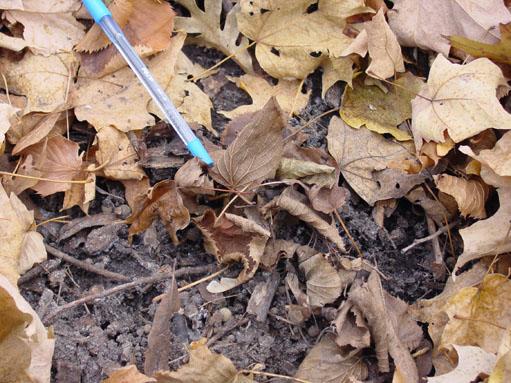
Effects of Different Ecological Groups of Earthworms in the Forest
Earthworms in different ecological groups have different feeding preferences and burrow systems and this affects the kinds of impacts they have in the forest. Epigeic species primarily affect the forest floor, endogeic species primarily affect the mineral soil horizons and anecic species can affect both the forest floor and the mineral soil horizon. As you might expect, the biggest effects come when more than one ecological group is present in a forest. However, research has shown that the changes in forest soils, the forest floor, and the understory plant communities are much greater when all three ecological groups than simply the sum of their effects alone. Researchers have examined these synergistic effects by using experiments where earthworms are introduced alone and in combination. This is one reason that even if some earthworm species may be present in a site, by preventing the introduction of even more species you may be able to limit the effects of earthworm invasion to some degree.